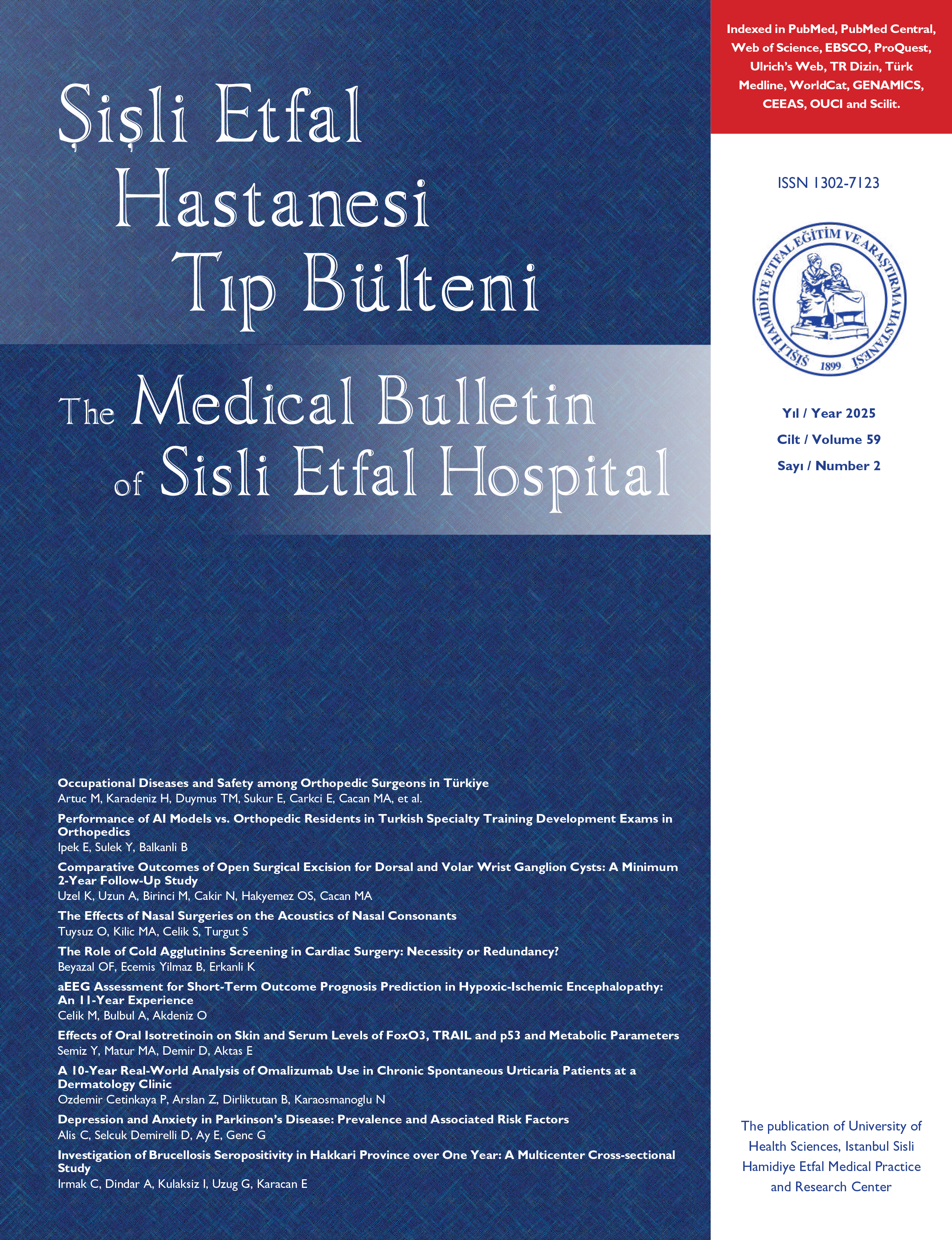
Comparison of the CPK-MB values before and after the stress test with coronary angiography results
Haluk Sargın, Mehmet Sargın, Mehmet Çobanoğlu, Mustafa Tekçe, Mesut Şeker, Ali YaylaDepartment of Internal Medicine, Dr Lütfi Kartal Training and Research Hospital, Istanbul, TurkeyObjectives: Many studies state that the serum creatinine phosphokinase-MB (CPK-MB) values increase during cardiac stress test. We aimed to determine the diagnostic importance of CPK-MB values and the results of coronary angiography in patients who have positive cardiac stress test, by comparing CPK-MB results before and after the exercise during the cardiac stress test.
Study design: Our study contained 40 patients who were admitted first Internal Medicine department between January and June 2001; that were thought to have coronary arterial disease. 10 of these had coronary angiography. 24 of these patients were male and 16 were female. The mean age was 56,23±10,5 years. The patients were performed Treadmill test using the standart Bruce protocole. Blood samples for CPK- MB were obtained from these patients before and after the first two hours of the test and the results were compared.
Results: When we evaluated the datas, there was a significant difference between CPK-MB values before and after the stress test in the patients who had positive stress test; but there wasnt in those who had negative stress test. Coronary angiography and ventriculography results of 10 patients, who had positive cardiac stress test, were found normal in two patients, three vessel diseased in four of the remaining eight patients, two vessel diseased in three and one vessel diseassed in one of them.
Conclusions: CPK-MB values in various degrees of ischemia were found different at studies in literature; also increased after the stress test in patients who had positive test results. As a conclusion, we think that these results support the ideas indicating that CPK-MB could be a predictor for the degree of ischemia.
Efor testi öncesi ve sonrası CPK-MB değerlerinin koroner anjiografi sonuçlarıyla karşılaştırılması
Haluk Sargın, Mehmet Sargın, Mehmet Çobanoğlu, Mustafa Tekçe, Mesut Şeker, Ali YaylaDr Lütfi Kartal Eğitim ve Araştırma Hastanesi, 1. Dahiiliye Kliniği, İstanbulAmaç: Serum kreatinin fosfokinazMB (CPK-MB) değerlerinin efor testi esnasında arttığı birçok çalışmada bildirilmektedir. Biz de bu çalışmada, efor testi uygulanan hastalarda egzersiz öncesi ve egzersizden iki saat sonraki CPK-MB değerlerini kıyaslayıp, efor testi müspet çıkan hastalarda CPK- MB nin seyri ve aynı hastalarda uygulanan anjiografi neticelerinin diagnostik önemini incelemeyi amaçladık.
Materyal ve Metod: Çalışmamız Ocak 2001-Haziran 2001 tarihleri arasında hastanemiz 1. Dahiliye kliniğine müracaat eden ve koroner arter hastalığı düşünülen 40 hastaya tatbik edilmiş, bunlardan 10nuna koroner anjiografi yapılmıştır. Bu çalışma grubundaki hastalardan 24ü erkek, 16sı kadın olup yaş ortalaması 56,23±IO,5dir. Vakalara standart Bruce protokolü uygulanarak Treadmill testi yapılmıştır. Testin uygulandığı 40 hastadan efor uygulanmadan önce kan alınarak CPK-MB tayini yapılmış, efordan sonra da ilk iki saatin sonunda CPK-MBleri alınarak karşılaştırılmıştır.
Bulgular: Elde edilen verileri değerlendirdiğimizde, efor testi pozitif olan vakalarda test öncesi ve sonrası bakılan CPK- MB değerlerinde anlamlı bir farklılık var iken, efor testi negatif çıkan vakalarda anlamlı bir fark bulunmamıştır. Efor testi pozitif çıkan 10 vakaya yapılan koroner anjio ve ventrikülografi tetkikinde iki hastanın koroner anjioları normal bulunmuş olup kalan sekiz hastanın dört tanesi üç damar hastası, üç tanesi iki damar hastası, bir tanesi de tek damar hastası olarak tespit edilmiştir.
Sonuç: Literatürdeki çalışmalarda değişik derecelerdeki iskemilerde CPK-MB seviyeleri farklı bulunmuştur: bizim çalışmamızda da efor testi pozitif hastalarda test sonrası CPK-MB değerlerinin yükseldiği görülmektedir Sonuç olarak, bu verilerin CPK-MB nin iskeminin ağırlığının bir göstergesi olabileceği yönündeki görüşleri desteklediğini düşünmekteyiz.
Manuscript Language: Turkish



















